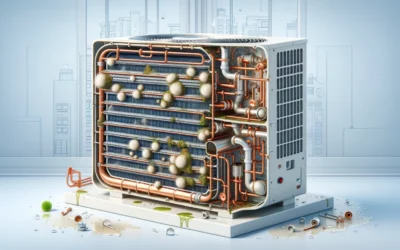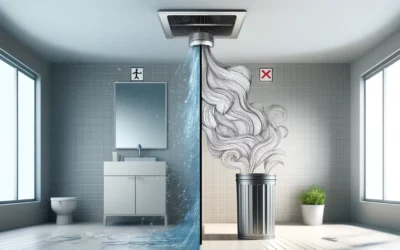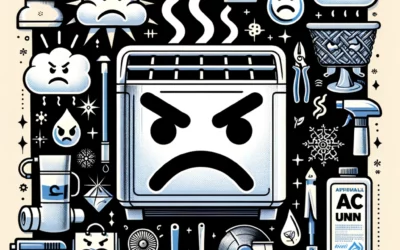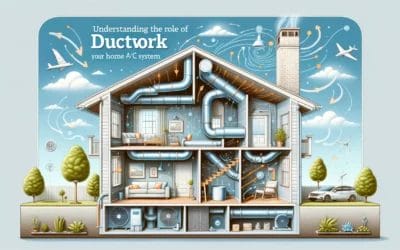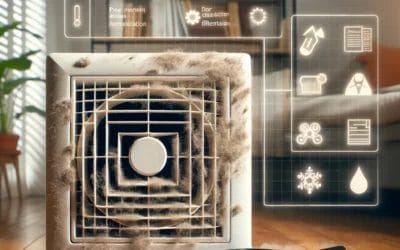Welcome to our comprehensive guide where expert AC contractors discuss uneven heating issues. Regularly experiencing temperature fluctuations throughout your home can be a frustrating issue, but worry no more! Our post dives deep into the...
HVAC Ventilation
Understanding Mold Growth in Your AC’s Evaporator Coil
Welcome to this insightful post titled "Understanding Mold Growth in Your AC's Evaporator Coil". In this guide, we shall throw light on the conditions that lead to mold growth in your AC's evaporator coil and how it can affect your air...
Understanding the Necessity of Bathroom Exhaust Fans: Moisture vs Smell
Welcome friends! Today's post is an insightful dive into the essential necessity of bathroom exhaust fans. Though often overlooked, these small devices play a massive role in maintaining the hygiene and freshness of one of the most often used...
Understanding Why Your AC Makes Your Home Feel Humid
Welcome everyone! Is your air conditioning unit making your home feel more like a steamy jungle than a cool retreat? You're not alone. In today's post, named "Understanding Why Your AC Makes Your Home Feel Humid", we unravel why this issue...
Understanding Why Your Air Vents Sweat During AC Use
Welcome to our informative post on "Understanding Why Your Air Vents Sweat During AC Use." This post is designed to help homeowners and property managers understand an often overlooked issue - condensation on air vents during the...
Why Your Central AC Emitting a ‘Wet Socks’ Odor: The Experts Explain
Welcome everyone! Have you ever walked into your home only to be met with an unusual 'wet socks' smell? It may surprise you to learn that your Central AC could be the culprit. Understanding the reason behind it will not only get rid of...
Understanding & Eliminating Unpleasant Odors from Your A/C Unit
Welcome to our informative post - "Understanding & Eliminating Unpleasant Odors from Your A/C Unit". We all desire fresh, cool air especially during the scorching summer months. But if your A/C unit emits unpleasant odors, it could be a total...
Understanding the Role of Ductwork in Your Home A/C System
Welcome to our comprehensive post on "Understanding the Role of Ductwork in Your Home A/C System". This piece aims to shed light on the intricate yet vital part of your residential cooling system - the ductwork. This fundamental...
Understanding Why Rats Nibble Your Attic Ductwork: An Expert’s View
Welcome to this educational and insightful post titled, "Understanding Why Rats Nibble Your Attic Ductwork: An Expert's View". Here, we shall shed light on the unusual yet common issue of rats gnawing at your attic ductwork, a problem many...
Unveiling Reasons Behind Dusty Air Vents in Your Home
Welcome to our informative post! Today, we'll unveil the reasons behind dusty air vents in your home. This is an issue far too many homeowners encounter but often fail to understand why. This educational post offers expert opinions based...
Unraveling the Mystery: Why Your AC Creates Hot and Cold Spots
Welcome to our latest post, "Unraveling the Mystery: Why Your AC Creates Hot and Cold Spots." Does your air conditioning system create inconsistent temperatures throughout your home? If so, this educational, fact-based post will provide you...
Demystifying Lifespan: How Long Home Air Filters Truly Last
Welcome to our latest post - "Demystifying Lifespan: How Long Home Air Filters Truly Last". We understand that determining when to change your home air filters can be mystifying. With so much conflicting information out there, it's tough to...


